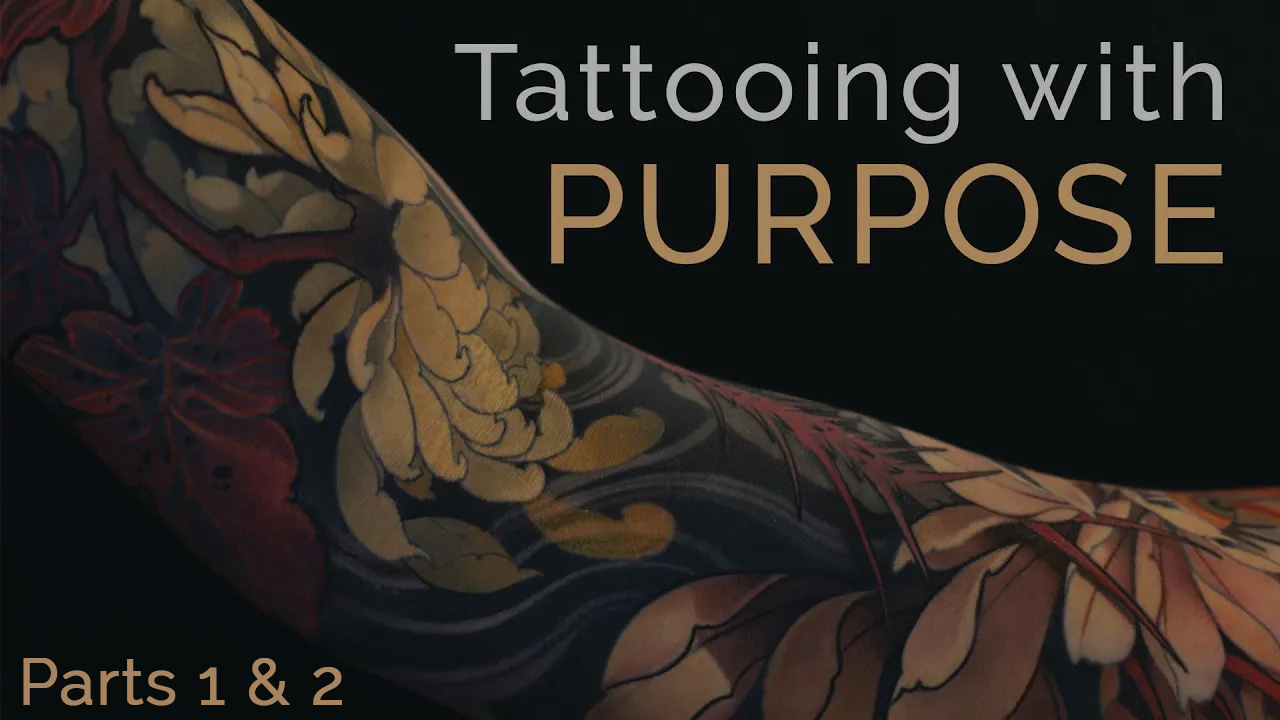Tattoo Techniques: The Most Common Problem with Bad Tattoos

The Most Common Problem with Bad Tattoos
(and how to Fix it)
| Fireside Technique |
If you have been tattooing for a while, you have most likely encountered the issue of having to follow up behind an incompetent tattooer and make an effort to fix their bad tattoos.
In today's episode, Jake covers what he considers to be the biggest challenge when dealing with this issue. It's probably not what you think. Enjoy!
This episode was made possible thanks to:
By Jake Meeks —
Topics: Bad Tattoo Rework, Tattoo Coverups, Tattoo techniques
What to Address First when looking at a Bad Tattoo
“Typically the technical ability of the tattooer that you are following up behind isn't the biggest problem to solve, in my experience…”
- Jake Meeks
When we think about reworking or covering bad tattoos, we typically focus on the technical skill (or lack thereof) of previous tattooer. We talk about blown out lines, spotty color and scarring. However, in my experience, these are not the biggest obstacles to overcome.
The One Thing Tattoo Artists Can’t Control
“What this tattooer failed to recognize is how important the shape of the body is. That is the one thing that we don’t have any control over”
- Jake Meeks
The most common issue (and the one that should be addressed first) is the shape of the body and how the existing tattoo relates to it.
In this example, the previous tattooer ignored the flowing shape of the client’s thigh and designed a series of shapes that acted as roadblocks, disrupting the natural flow of the client’s hip and thigh.
Covering up Bad Tattoos
An Attempt at Solving the Problem
“The first thing I did was to introduce these sweeping leaf shapes in an attempt to lift the viewer's eye and move it through the composition…”
- Jake Meeks
My first goal with this piece was to introduce some secondary element that would break the hard horizontal shapes that the previous tattooer had introduced. I chose to use a few very simple leaf shapes to solve this problem. I wanted to be sure that the leaves looked as if they were part of the original design, so I had some of the leaves fall behind the snake and others fall in front of it. This required that I tattoo right over the harsh lines of the snake, which wasn’t ideal, but sometimes we have to sacrifice perfection in order to make some progress.
I was able to distract from most of the bad linework by introducing a strong light source and turning the outlines into edges/transitions. Most of my problems were solved (as much as they could be) before I introduced color. Here is a photo of the finished piece.
While the tattoo still has issues (I never was able to completely solve the problem with the roses) I feel like overall I was able to successfully distract the viewer from the shortcomings of the piece by establishing a hierarchy within the composition. By using strong value contrast and a deliberate light source on the body of the snake, attention is pulled away from the weakest areas of the tattoo and focused on the strongest parts.
Thanks for reading!
Want more tattoo education and resources?
Check out our Drawing for Tattoos catalog HERE!
Transcript for this video can be found (here). All transcripts can be found (Here)
The Fireside Tattoo Network is home to the Fireside podcast, Fireside Technique video series and our Fireside Weekly blog.
The Fireside Tattoo podcast is hosted by veteran tattooer Jake Meeks, check out our episodes where we discuss, argue and wax philosophical, from tips for all levels of artists to trends in the tattoo world. Many of the world’s best artists have sat down for interviews and in-depth conversations and many more are planned…check back often!
Our Fireside Tattoo Overview video series offers informative, short, and detailed videos geared towards helping artists understand the science and nuances of tattoos and make more informed decisions to improve their work. We often take some of our more technical topics from our Fireside podcast and film an in-depth, narrated, time-lapse video showing exactly how Jake or our featured artists handle certain issues.
Support us while buying the stuff you need at the links below!
- Get 10% off the Neuma 4 with code “Fireside” at checkout
https://neumatattoo.com - Get 10 % off all S8 Tattoo products with promo code “Fireside”
https://s8tattoo.com/ - TattooNOW Website and Automation services at the link below
https://TattooNOW.com/Fireside - Get 10% off your order from Raw Pigments with code “fireside”
https://rawpigments.co/
Tattoo Techniques
Tattoo technique is, no doubt, an art of its own. Like any skill or trade, tattooing has been closely guarded by tattooers throughout modern history. We take a different approach here at Fireside. Our goal is to embrace the information age by making a conscious effort to help artists of all skill levels solve their technical tattoo challenges.
We'll touch on topics like:
We’ve got a plethora of podcasts on being a well-rounded tattoo technician:
Fireside Tattoo Podcast
Recent News
Inside Fireside: Mentality, Pain Management, and the Art of Client Care with Kurt Jacobson
- 09/06/24
Why Do We Care About Give? - Carson Hill
- 07/24/24


